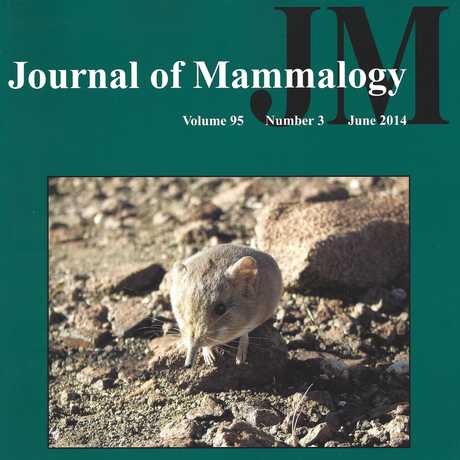- Dr. Jack Dumbacher, Curator of Birds and Mammals, California Academy of Sciences
- Dr. Galen Rathbun, Fellow and Research Associate, California Academy of Sciences

Within the immensity of the Namibian desert lives a surprising number of animal species. It is home to giraffe and gerbil, bat-eared fox and oryx, and very few people. For our purposes, the Namibia desert offers scientists the chance to study one of the smaller and lesser-known species belonging to the Macroscelidea, or sengis (also known as elephant shrews). We've been working extensively on the round-eared sengis, the smallest and cutest members of the order, which all belong in the genus Macroscelides.
These sengis can teach us a great deal about evolutionary forces. This tiny animal, resembling a gerbil, has lived relatively undisturbed by man for millions of years in a vast remote desert where it feeds entirely on small insects and arthropods. Our expeditions to Namibia offer rare opportunities to study species that have lived in isolation for millions of years. And most recently, our work has led to the discovery of a new species of reddish-colored round-eared sengi that is restricted to a northern Namibian region dominated by red volcanic rocks.
In addition to the round-eared sengis, Research Associate Galen Rathbun has also studied giant sengis (genus Rhynchocyon) and recently helped describe the largest member of the order, the grey-faced sengi (R. udzungwensis).
Long thought to be related to the hedgehogs or shrews, research based on DNA evidence and molecular studies revealed that sengis are more closely related to the elephant than to the shrews. (Although in absolute terms, they are not genetically very similar to either.) Instead sengis are now recognized as a member of an ancient, solitary offshoot of the African mammal evolutionary tree, Afrotheria. Visit afrotheria.net for more information on the ancient radiation of African mammals.
Learn more about sengis and our efforts to understand them at Sengis.org.

With colleague Galen Rathbun, we have studied relationships within the round-eared sengi (Macroscelides proboscideus) throughout the western deserts of Namibia. We recently published a paper examining the taxonomy of this group, which resulted in splitting this species into two [Dumbacher, J.P., G.B. Rathbun, H.A. Smit, and S.J. Eiseb. 2012. Phylogeny and taxonomy of the round-eared sengis or elephant-shrews genus Macroscelides (Mammalia Afrotheria Macroscelidea). PLoS One 7(3): e32410. doi:10.1371/journal.pone.0032410]. While performing this work, we discovered a single specimen that did not match these others, and after multiple field trips and genetic lab research, we have discovered that this is a new species. The new species description came out this summer and was the cover article for the Journal of Mammalogy (Dumbacher et al., 2014. A new species of round-eared sengi (genus Macroscelides) from Namibia. Journal of Mammalogy, 95(3):443–454).
We will be in Namibia in October and early November 2014, studying the behavior and life history of the genus Macroscelides, with a focus on the new species.
